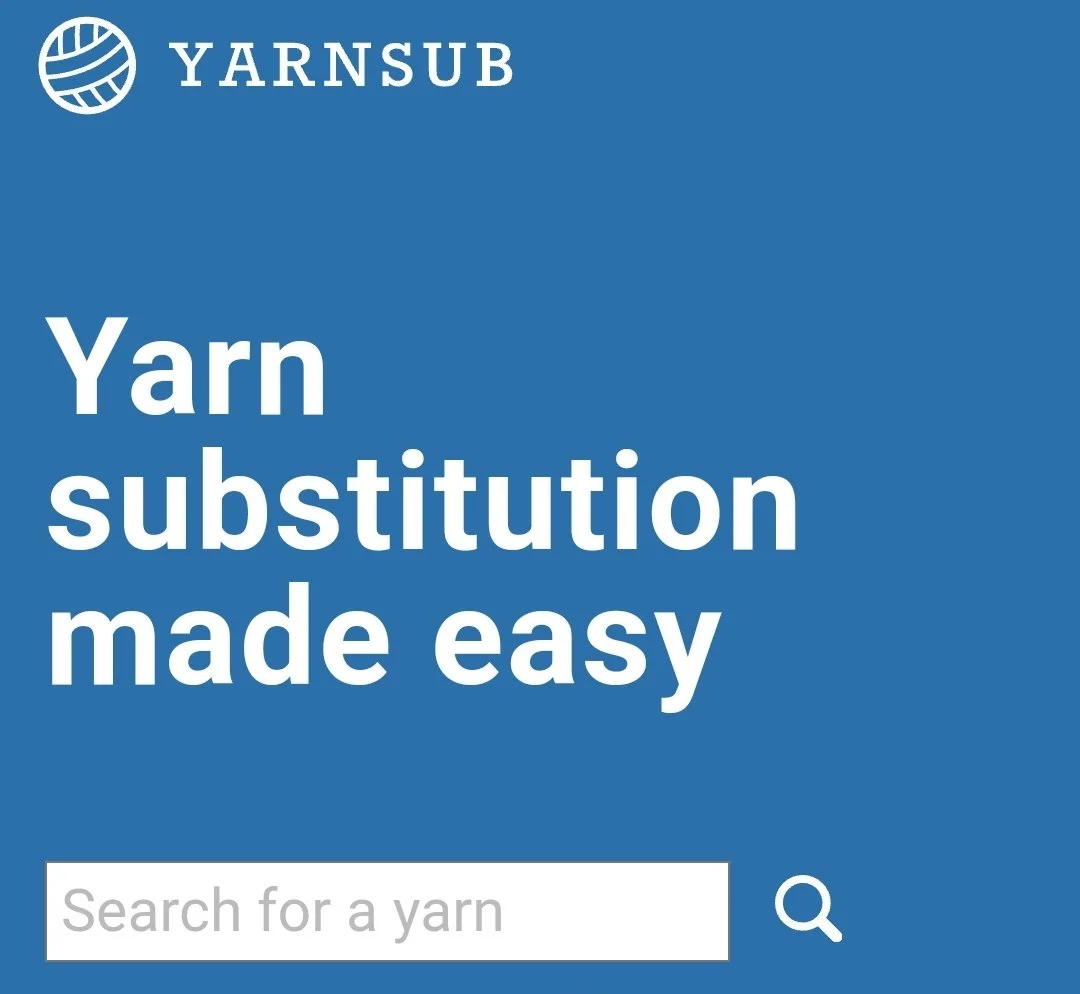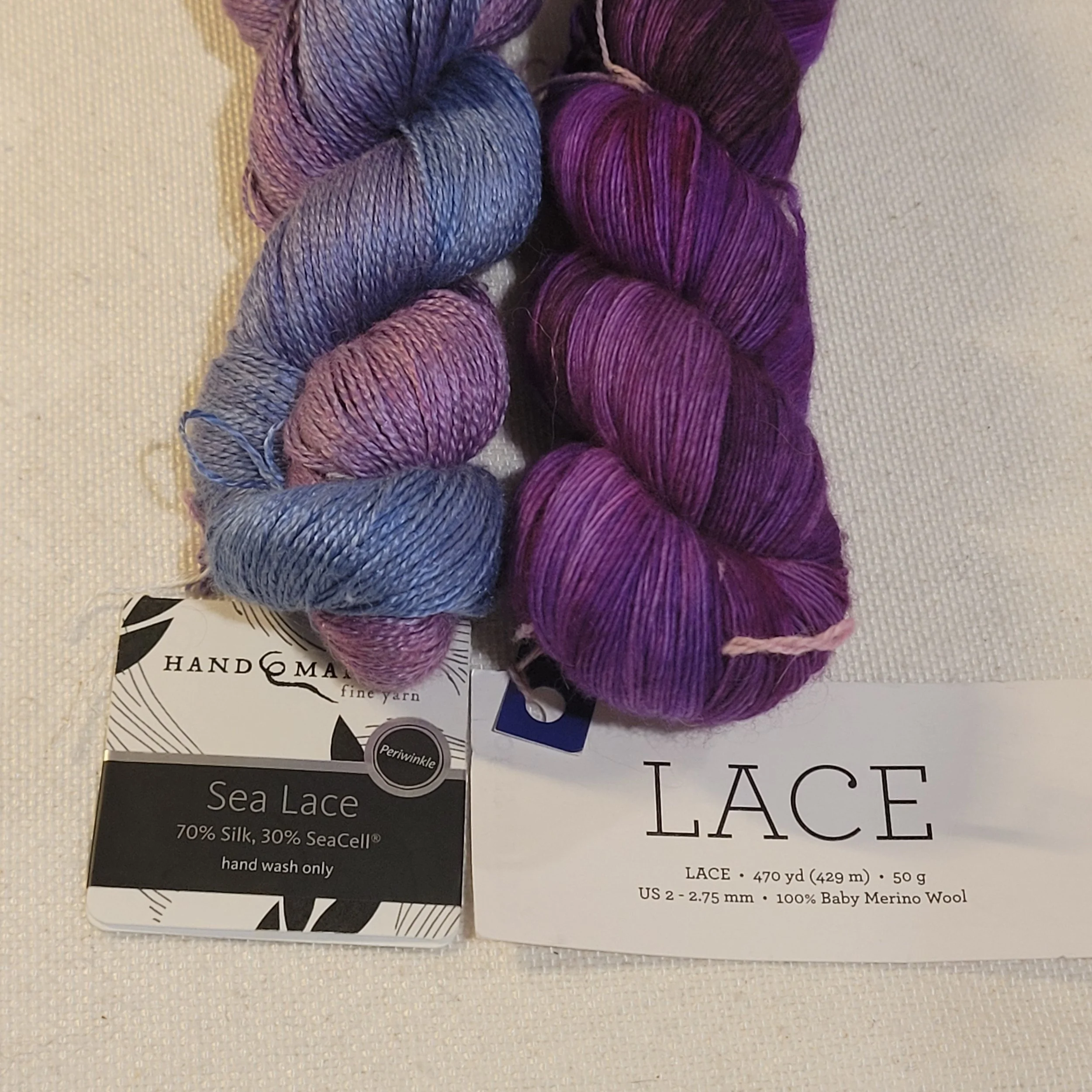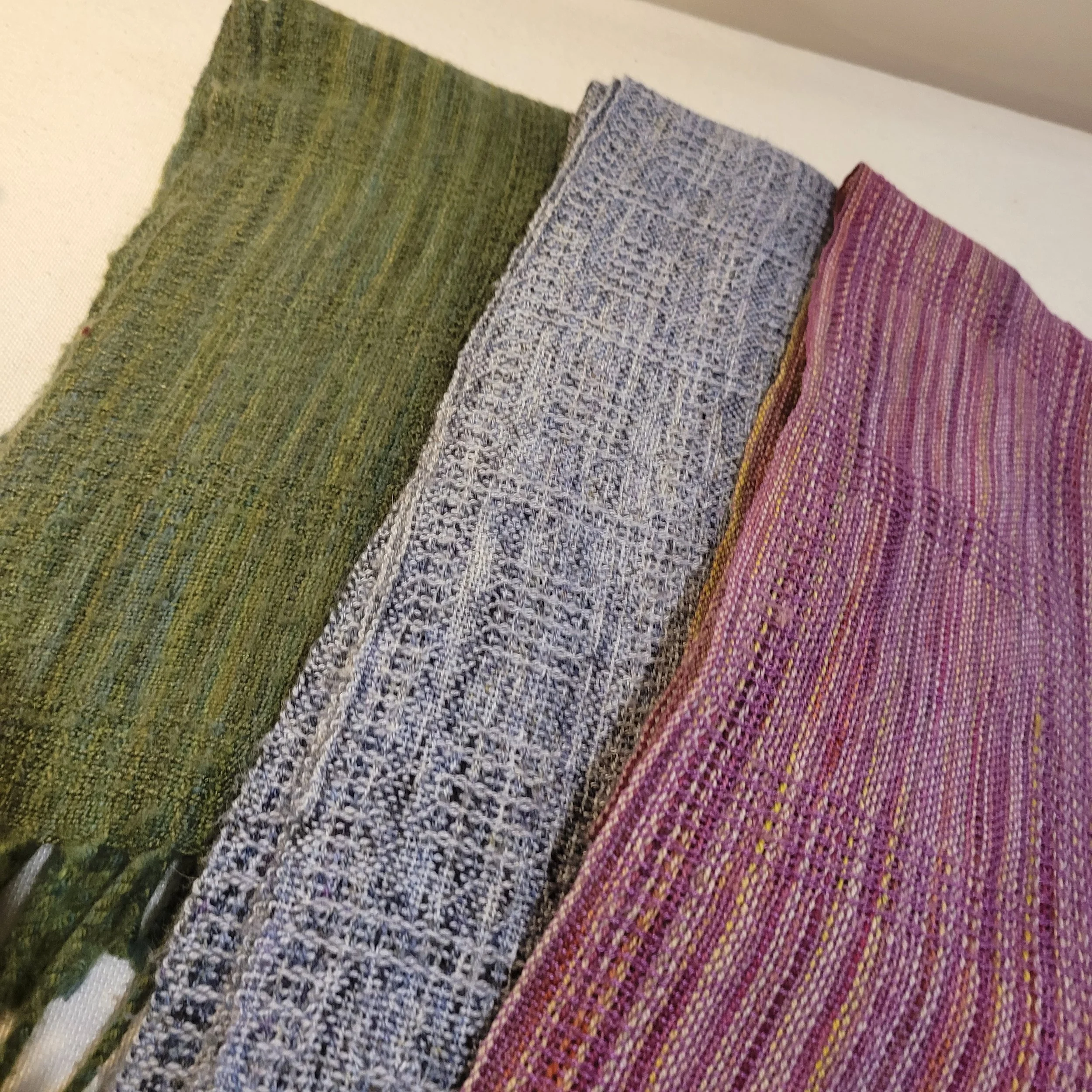Yarn Substitutions
We’ve all been there. We have the pattern in hand but no yarn. We visit our LYS and they don’t have the yarn. They can maybe order it in, but we want to start our project now! What to do? How do we know what else we can use?
I don’t have all the answers because I have not used all the yarns in all the projects *sigh*, but, here’s what I do when people message me asking for ideas:
I open up Ravelry and go to the yarn section. Type in the yarn, then pick a project. It doesn’t really matter what project but if I’m making a scarf I’m going to look at a scarf pattern just because. I do want to pick one that has many projects.
Once I find a pattern that has lots of projects, I click on the pattern, then open “yarn ideas”.
Once I have all the yarn choices, I can start picking the best ones for the project.
Now, I know not everyone uses Ravelry, so as I was writing this I thought there must be an alternative, so I googled “yarn substitution” and found YarnSub. I expect many of you reading this so far was wondering why I didn’t go to this in the first place! Sometimes if something works, I don’t go looking for something better. YarnSub is super simple. Just type in the yarn and search! I tested it with lots of different yarns and it could only not find one (and I did find the same yarn on Ravelry). You can even search by weight and fibre content. Search results will bring up the yarns with the ball band description. I now have YarnSub added to my phone!
Right, so we now have a zillion and a half choices, how do I know which one to pick?
First, eliminate anything you think you can’t get. Remember, you went to your local yarn shop for a reason so see if they carry any of the options.
Second, look at the fibre content. Animal fibres behave differently from plant fibres so replacing cotton with wool will not give the same effect as the pattern. You might decide to go with it anyway, but know it will not be the same as the pattern and you might need to change things up a bit.
Third, if it is for warp, make sure the yarn you are looking at is warp friendly. Of course you can’t start pulling yarn apart before buying, but you can look pretty closely. Is it a loose single ply? Probably not ok. Is it super fuzzy but the yarn called for is smooth? Probably not ok.
Fourth, look at the structure of the yarn. If the yarn called for in the pattern is super stretchy but the yarn is in the shop has no stretch, it’s probably not a good substitution. As a general rule, plant fibres do not have as much stretch as a plied animal fibre.
Finally, do talk to the yarn shop staff. For they most part they are friendly happy people who really want you to go home and make a fabulous project that you love. Yarn shop staff are a wealth of information that they can’t wait to share! They will be able to read the info about the yarn in your pattern and compare it to the yarns you are considering and tell you which would be the best choice and why.
The yarns in the photo on the left might substitute well, the weights are the same and will work in the same reed. Also, both contain mostly animal fibre. But the tweedy bits in the Kathmandu will have a visual impact and might obscure a pick-up pattern. The yarns in the middle picture are both the same weight. The cotton content in the Illimani however means that there is very little stretch while the Juniper Moon has a fair bit of stretch. This might be fine, but you may need to add in extra length to the warp on the stretchy yarn to maintain the same finished length. And, the Juniper Moon is superwash meaning I might use a smaller reed. The final picture: again, the weights are similar but the content different. The Sea Lace will not stretch or full very much, but will give a beautiful shine. The Lace is has no shine and will full (in fact, it will felt with wear). That means I can use it on a bigger reed than the Sea Lace even though the Sea Lace is slightly heavier.
Three almost identical scarfs using three different yarns with very different (but lovely) results.
Now for the disclaimer. (Maybe I should have put this at the top!) When a designer suggests a yarn, it is because we have used the yarn for the project and know it works. When we suggest alternatives, we might never have seen or touched the yarn. Sometimes we are familiar enough with the alternative to be able to confidently say yes, this will work. Other times we are much more tentative. You’ll often read me saying it *should* work but I’ve never tried it.
When you make substitutions you are taking your life into your own hands. And this is exactly what I think you should be doing! Play with yarn, learn how different yarns react to tension and being released from tension. Take a tea towel pattern and weave a scarf using wool instead. There are no serious consequences from taking weaving risks and so much to gain. Yes, you may end up with a project that didn’t turn out as intended, but you will have learned some important information about your yarn and the pattern. And save the piece, you never know when it might come in handy!







